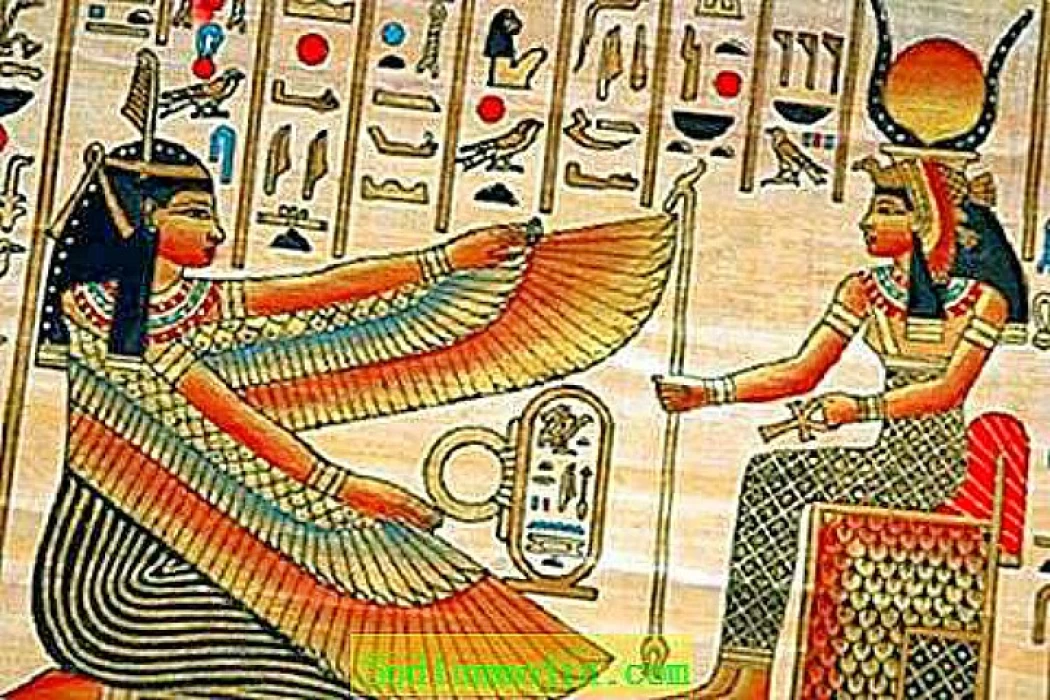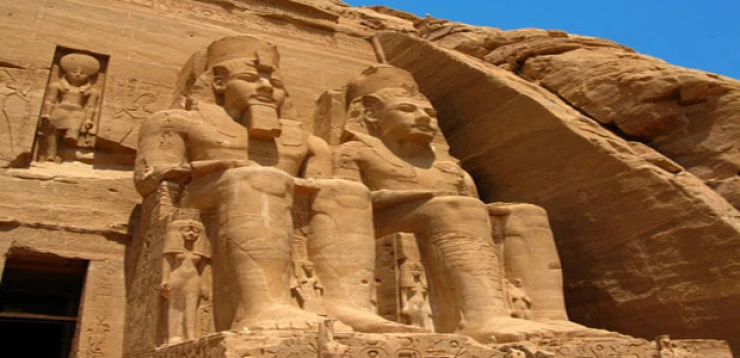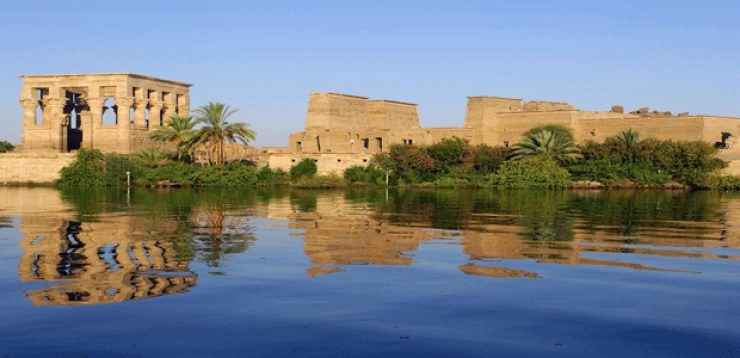
埃及女神伊希斯
伊希斯在 “金字塔文本”(即所谓的殡葬文本)中首次被提及。她作为妻子、母亲和姐妹的顺从被记录在案。据她的家人说,她是大地之神盖布和天空女神努特的女儿。在整个埃及,她与她的丈夫和兄弟奥西里斯一起被供奉在当地农民的家中和富人的宫殿里。此外,《金字塔文本》也叙述了这个故事,其中写道:“哭吧,伊希斯,为你的兄弟奥西里斯哭泣吧”。在另一处文字中,奥西里斯说:“伊希斯会照顾你的,她找到你之后会照顾你的”。在埃及经典之旅(Egypt Classic Tours)中探索埃及神庙和金字塔的历史和伊希斯的故事,选择您的最佳假期。
伊希斯神庙位于阿斯旺省的东岸,紧靠城市的东部围墙。在托勒密三世国王和托勒密四世国王统治时期,该神庙被部分修建,后来被改建成教堂,很可能是为圣玛丽修建的。这座神庙是最重要的考古发现之一,自 1871 年被发现以来,至今仍保存完好,因为神庙的四面墙壁和带有独特花岗岩面板的屋顶仍巍然屹立。在您选择的埃及复活节旅游行程中参观伊希斯神庙,与开罗顶级旅游公司(Cairo Top Tours)的专业埃及专家一起欣赏历史。
菲莱神庙遗址包括许多供奉荷鲁斯之母伊希斯的建筑。在被称为 “哺乳室 ”的出生室里,有一个场景是庆祝荷鲁斯出生的地方,伊希斯在丛林中哺育她的儿子荷鲁斯。在卢克索和阿斯旺之间最棒的埃及尼罗河游轮之旅中,您将看到美丽而伟大的菲莱神庙。
Isis is the heroine of a legend that originated in ancient Egypt, and her influence extended to different parts of the world, from thousands of years until the present time, transcending her original religious character, to be manifested in the arts and literature in various cultures, including Arab culture.
Goddess Isis is one of the greatest Egyptian goddesses. She was the wife and the semi-sister of Osiris. They had a son named Horus. Isis was the goddess of life and magic, so she was able to shield women and children. She also helped sick people by healing them from their sicknesses. Her symbols were the ankh, her wings, and her throne headdress.
Egyptian gods and goddesses usually started in one place. They had their own cities where they were venerated throughout the ages. It was popular in ancient Egypt that the wife could be the sister of the king because they preferred that the queen come from the royal family. The city or the town of Isis's worship was not found throughout early history. Because there were no known temples for her.
Especially the legend of the faithful wife of the Lord of the underworld in ancient Egypt (Osiris), Goddess Isis, and her famous son Horus, who took revenge for his father's pathetic murder by the evil god of the desert and the foreign lands.
You can see the whole story and the myth of Isis and Osiris depicted on the walls of the ancient temples of Egypt, like the Edfu Temple and Philae Temple in Aswan.
Worshiping Isis in certain temples did not start until the end of the 30th dynasty. Before that, people were worshipping Isis in other gods' temples during the Middle Kingdom and the New Kingdom of ancient Egyptian history. In the 30th dynasty, people worshipped Isis with her husband Osiris and her son Horus.
In the Roman age, temples of Isis became more popular. One of them is known as the Temple of Philae. Years after years, Isis's temples were so famous that they deployed abroad, and her followers transferred the venerating of Isis to the Semitic goddess Astarte because of the similarity of names. In the Hellenistic era, she also became the goddess who protected sailors. Once you are in Egypt, Cairo Top Tours will take care of it through our highly qualified guides specialized in Egyptology to make your visit to the land of the Pharaohs a success.
The mother occupied a great position that was embodied in all aspects of life, from family and society to religion, art and literature.
The goddess Isis represents the most famous image of motherhood in ancient Egypt, embodying the example of a protective and sacrificial mother... Isis appears in most inscriptions carrying or breastfeeding her child Horus, reflecting the mother's role in protecting and caring for her children.
Goddess Isis is one of the most revered and powerful deities in ancient Egyptian mythology. Known as the goddess of life, magic, and healing, Isis played a crucial role in protecting women, children, and the sick. She was both the wife and the semi-sister of Osiris, the god of the underworld, and together they had a son, Horus. Isis' divine attributes were represented through her symbols: the ankh (a sign of life), her majestic wings, and the throne headdress that signified her royal status.
Isis was believed to guide the dead to the afterlife and helped Osiris, and was considered the divine mother of the pharaoh as he was likened to her son Horus. Her maternal assistance was represented by a healing spell to help the common people.
Egyptian gods and goddesses often had specific cities where they were venerated. However, in the early stages of Egyptian history, there were no dedicated temples for Isis. Instead, she was worshipped within the sanctuaries of other gods. It wasn’t until the 30th Dynasty that her cult gained widespread recognition, and dedicated temples were built in her honor.
Her worship continued on Philae Island in Aswan until the 6th century AD, long after the Egyptian and Roman eras had ended, a testament to her importance and presence.
Over the centuries, Philae gained a special status in worship, to the point that crowds of followers of the cult would gather to relive the story of the death and resurrection of Osiris.
During the Middle and New Kingdoms, worshippers honored Isis alongside Osiris and Horus, forming a sacred trinity. As her influence grew, her worship extended beyond Egypt, spreading to regions such as Rome, Greece, and even parts of Asia. The cult of Isis became so widespread that her veneration was later associated with the Semitic goddess Astarte, due to the similarities in their names.
One of the most compelling myths in Egyptian history is the story of Isis and Osiris. Osiris, the ruler of Egypt, was treacherously murdered by his jealous brother, Set, who dismembered his body and scattered the pieces across the land. In her devotion, Isis tirelessly searched for Osiris’ remains, reassembling them with her divine magic and resurrecting him long enough to conceive their son, Horus.
Horus later avenged his father’s murder by defeating Set, restoring justice and order. This legend, deeply rooted in themes of loyalty, resurrection, and the eternal struggle between good and evil, can be found inscribed on the walls of temples such as Edfu and Philae in Aswan.
















